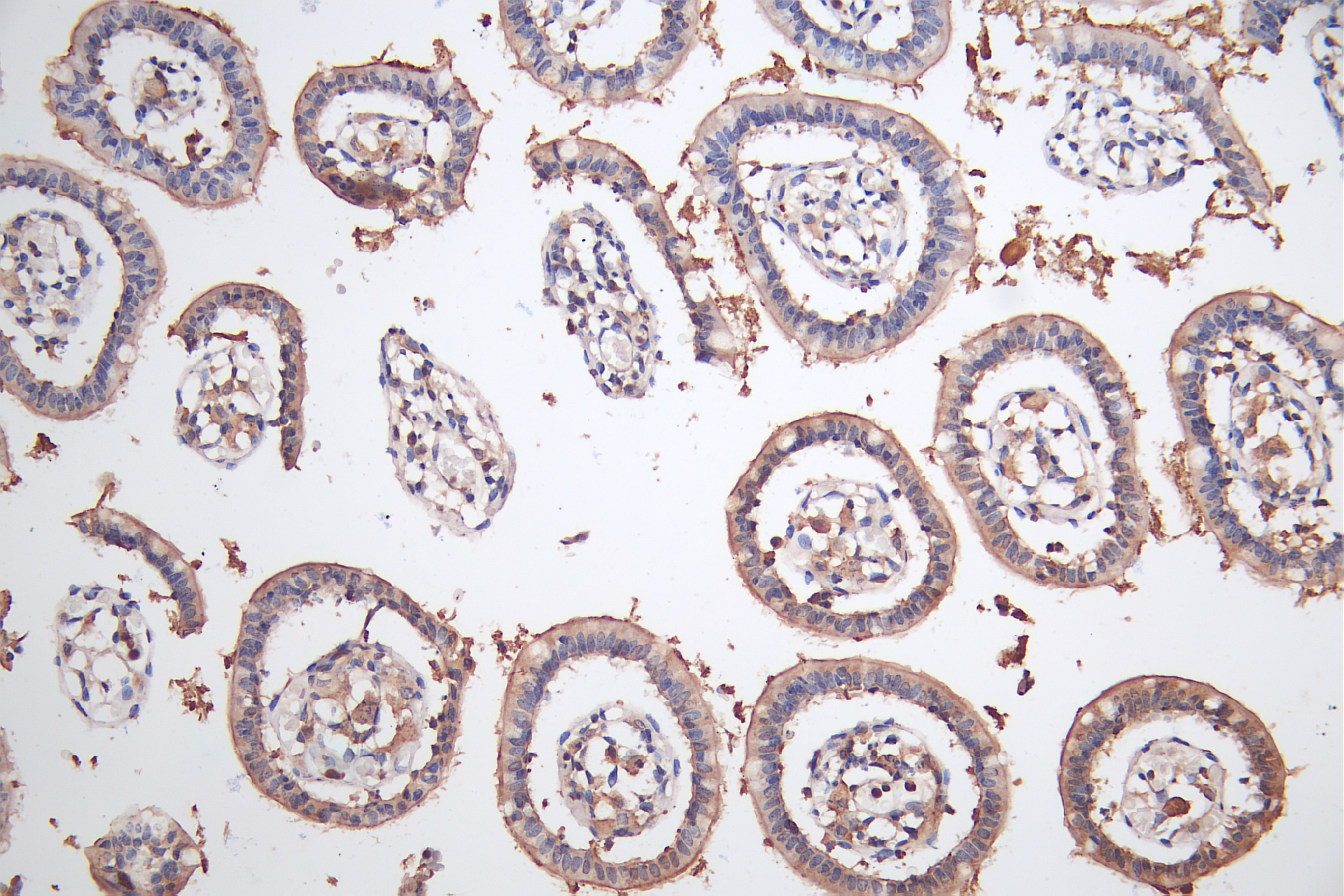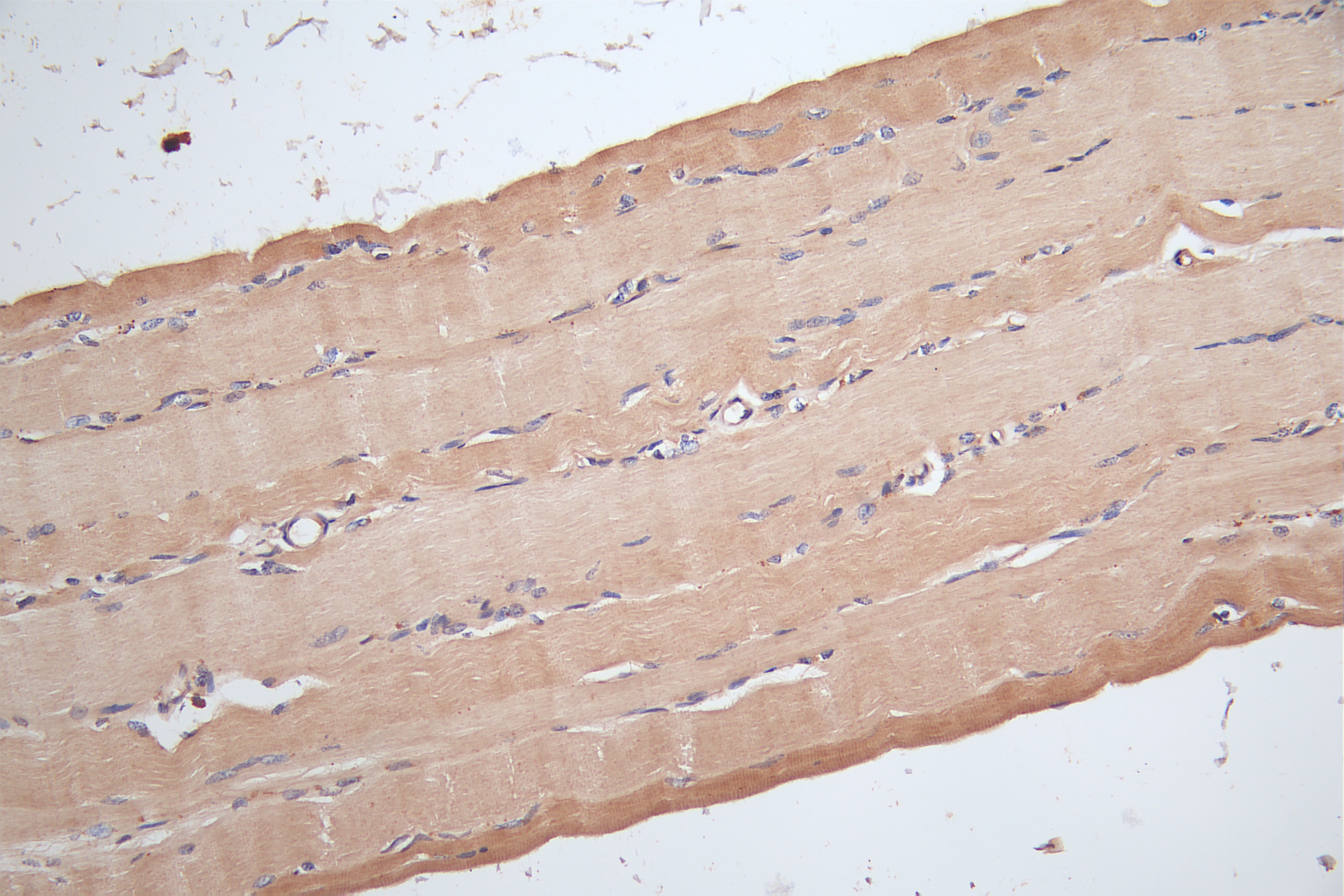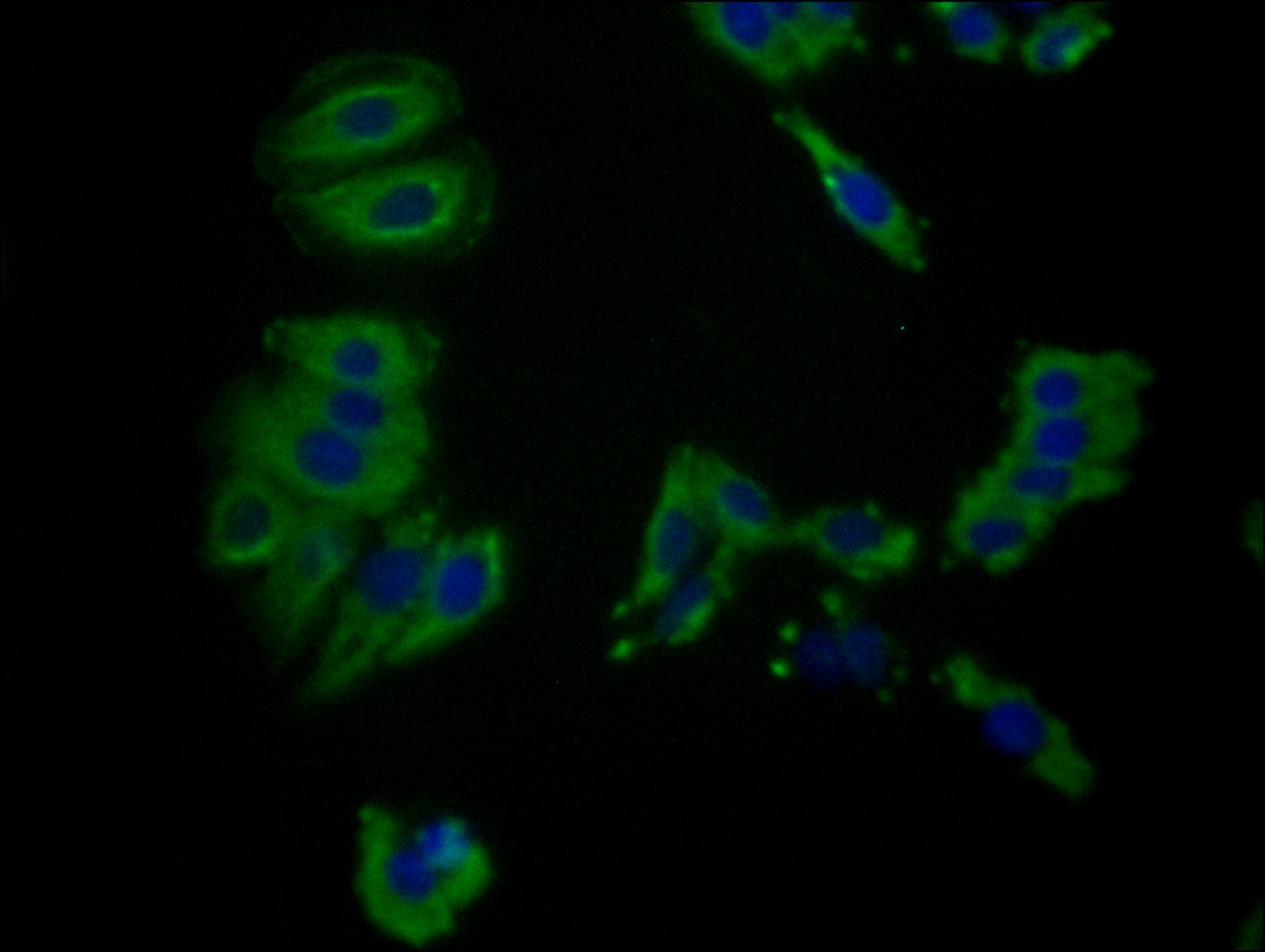Full Product Name
Rabbit anti-Homo sapiens (Human) BTNL2 Polyclonal antibody
Alternative Names
BTNL2Butyrophilin-like protein 2 antibody; BTL-II antibody
Immunogen
Recombinant Human Butyrophilin-like protein 2 protein (246-455AA)
Immunogen Species
Homo sapiens (Human)
Purification Method
Antigen Affinity Purified
Concentration
It differs from different batches. Please contact us to confirm it.
Buffer
PBS with 0.02% sodium azide, 50% glycerol, pH7.3.
Tested Applications
ELISA, IHC,IF
Recommended Dilution
| Application |
Recommended Dilution |
| IHC |
1:20-1:200 |
| IF |
IF1:20-1:200 |
Storage
Upon receipt, store at -20°C or -80°C. Avoid repeated freeze.
Lead Time
Basically, we can dispatch the products out in 1-3 working days after receiving your orders. Delivery time maybe differs from different purchasing way or location, please kindly consult your local distributors for specific delivery time.
Description
CUSABIO uses the peptide mapping within amino acids 246-455 of the recombinant human BTNL2 to immunize rabbits to yield the anti-BTNL2 antibody. It is a polyclonal antibody and occurs as an unconjugated IgG. And it underwent antigen affinity purified. This BTNL2 antibody can detect with human and mouse BTNL2 protein, an MHC class II gene-linked butyrophilin-like molecule, with the human autoimmune diseases sarcoidosis and myositis. And it has been verified to recognize the BTNL2 protein in ELISA, WB, and IHC applications.
Usage
For Research Use Only. Not for use in diagnostic or therapeutic procedures.








